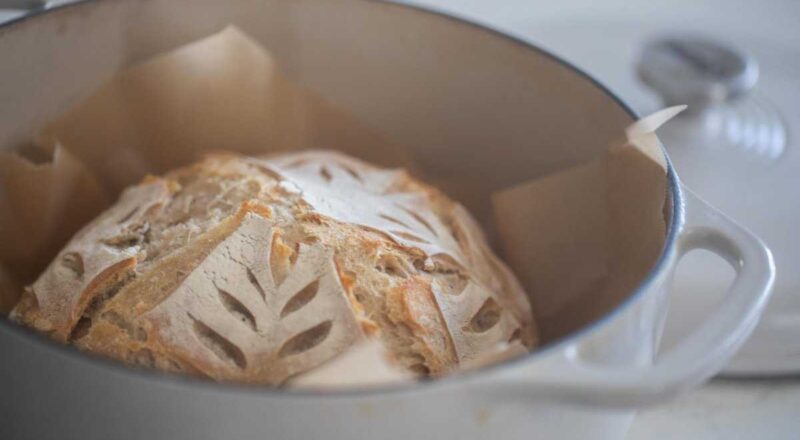Preparing delicious meals in a Dutch oven is a pleasure, but dealing with rust can be frustrating. Fear not! This comprehensive guide will teach you how to clean a rusty Dutch oven effectively and make it look almost new again. Whether you’re a novice or a seasoned chef, these instructions are easy to follow and will ensure your Dutch oven remains a kitchen staple for years to come.

What is a Dutch Oven?
A Dutch oven is a versatile cooking pot known for its thick walls and tight-fitting lid. It can be made of various materials, including cast iron, enameled cast iron, and aluminum. Many home cooks use it for braising, baking, frying, and stewing. Unfortunately, even the best Dutch ovens can fall prey to rust if not properly cared for.
Why Do Dutch Ovens Rust?
Rust forms on Dutch ovens due to prolonged exposure to moisture and air. Even minor lapses in maintenance, such as leaving it wet or storing it in a damp environment, can trigger rust formation. Thankfully, restoring a rusty Dutch oven is possible with the right techniques.

Preparing to Clean Your Dutch Oven
Gather Your Cleaning Supplies
- Steel wool or scouring pad
- Baking soda
- White vinegar
- Dish soap
- Vegetable oil
- Paper towels or a clean cloth
- Oven mitts

Step-by-Step Guide on Cleaning a Rusty Dutch Oven
Step 1: Remove Loose Rust
Start by scrubbing the rusty areas with steel wool or a scouring pad. Be thorough but gentle to avoid damaging the pot. The goal is to remove as much of the loose rust as possible.
Step 2: Baking Soda and Vinegar Treatment
Create a paste using three parts baking soda and one part water. Apply the paste to the rusty areas and let it sit for about 30 minutes. Afterward, pour white vinegar over the treated areas. The chemical reaction between baking soda and vinegar helps lift rust from the surface.
Step 3: Scour the Rust
Use steel wool or a scouring pad to scrub the areas treated with the baking soda and vinegar paste. Rinse the pot with warm water and check for any remaining rust. Repeat the process if necessary.
Step 4: Wash and Dry Thoroughly
Once the rust is removed, wash the Dutch oven thoroughly with warm, soapy water. Rinse well to ensure no soap remains. Dry the pot immediately with paper towels or a clean cloth to prevent new rust from forming.
Step 5: Season Your Dutch Oven
To protect the surface and prevent rust, you’ll need to season your Dutch oven. Apply a thin layer of vegetable oil to the entire pot, both inside and out. Place it upside down on the middle rack of your oven, with a sheet of aluminum foil on the bottom rack to catch any drips. Bake at 350F (175C) for one hour. Allow it to cool completely inside the oven before storing.
Maintaining Your Dutch Oven
Regular Cleaning
After each use, wash your Dutch oven with warm, soapy water. Avoid using harsh detergents or metal utensils that can scratch the surface and lead to rust.
Proper Storage
Store your Dutch oven in a dry place to prevent moisture buildup. Consider placing a paper towel inside to absorb any residual moisture.
Routine Re-Seasoning
Periodically re-season your Dutch oven to maintain its protective layer. How often this is needed can vary depending on usage, but a good rule of thumb is to re-season every few months.
FAQs
1. Can I cook with my Dutch oven even if it has a bit of rust?
It’s best to remove all rust before cooking to ensure safety and maintain the quality of your dishes.
2. What if my Dutch oven has stubborn rust spots?
For stubborn rust spots, repeat the baking soda and vinegar treatment until completely removed. You can also soak the pot in a vinegar solution overnight.
3. Can I use the same method for an enameled Dutch oven?
Avoid using steel wool or abrasive materials on enameled Dutch ovens to prevent damage. Stick to non-abrasive cleaners and a soft sponge.
As an Amazon Associate, I earn from qualifying purchases.

